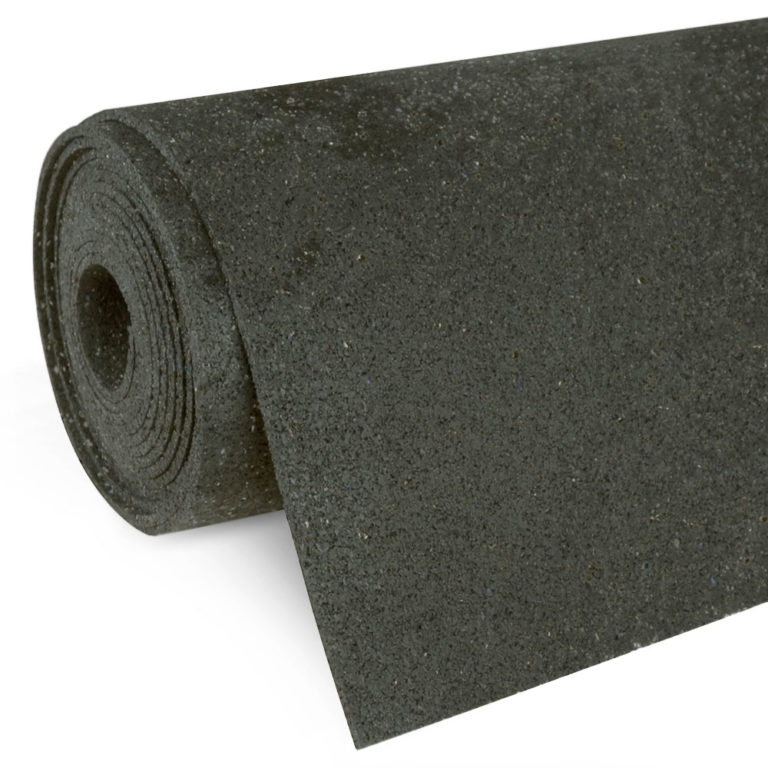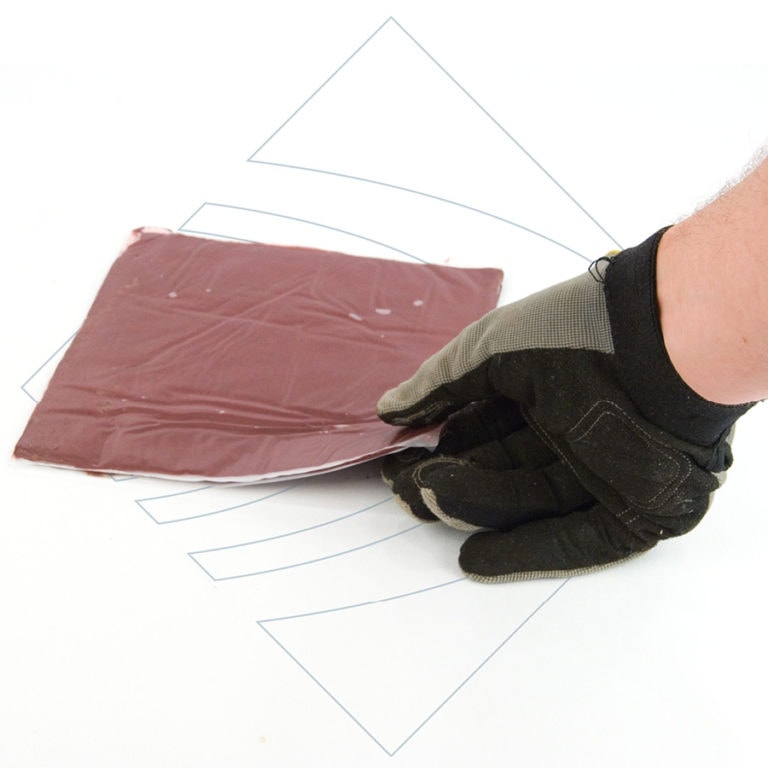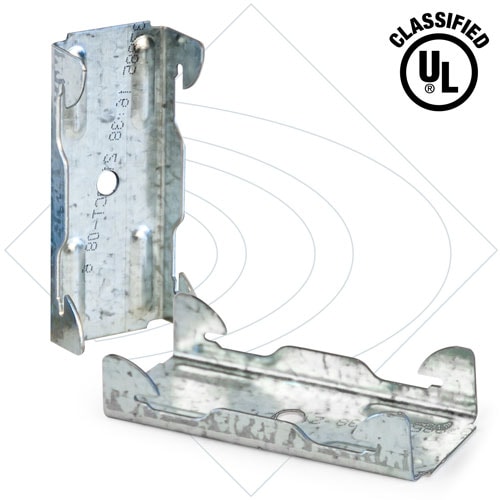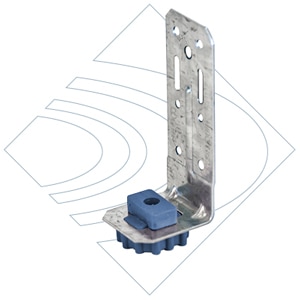Soundproofing Terminology
Sound and acoustical vocabulary can be confusing, especially when you need to understand how it impacts your soundproofing solution. Some terms are similar but have different meanings; other ideas or items can be expressed in multiple ways.
Below is a fairly thorough glossary of soundproofing and acoustical terminology with definitions of all the terms you need to know to get your next soundproofing project right the first time.
List of terms related to sound
_______________________________________________________________________________________________
List of definitions related to sound
ACOUSTICS:
The scientific study of sound, its production, transmission, and effects.
ACOUSTICAL:
The properties of a material to absorb or reflect sound (adjective), Acoustically (adverb).
ACOUSTICAL ANALYSIS:
A review of a space to determine the level of reverberation or reflected sound in the space (in seconds) influenced by the building materials used to construct the space. Also the amount of acoustical absorption required to reduce reverberation and noise.
ACOUSTICAL CONSULTANT:
A professional who is experienced in providing advice on acoustical requirements, and noise control in a variety of situations.
ACOUSTICAL ENVIRONMENT:
The acoustical characteristics of a space or room influenced by the amount of acoustical absorption, or lack of it in the space.
AIRBORNE SOUND:
Sound that reaches the point of interest by traveling through the air.
AMBIENT NOISE/SOUND:
All noise level present in a given environment, usually being a composite of sounds from many sources far and near. Traffic, HVAC, masking sound or even low-level background music can contribute to ambient level of noise or sound.
AMPLITUDE:
The nonnegative scaler measurement of a sound wave’s peak magnitude during a frequency cycle or peak pressure variation.
ARCHITECTURAL ACOUSTICS:
The control of noise in a building space to adequately support the communications function within the space and its effect on the occupants. The qualities of the building materials used to determine its character with respect to distinct hearing.
ARTICULATION CLASS (AC):
A measure of rating building elements such as acoustical ceilings and acoustical screens for speech privacy purposes. AC values increase with increasing privacy. AC has replaced Noise Isolation Class (NIC) as the accepted industry standard performance value. NIC is based on hearing sensitivity rather than discernment of actual speech, which is the primary concern in open office layouts prevalent in acoustical design work.
ARTICULATION INDEX:
A measure of speech intelligibility influenced by an acoustical environment, and rated from 0.01 to 1.00. The higher the number, the higher the intelligibility of the spoken word in a sentence from 0 to 100%.
AREA EFFECT:
Acoustical materials spaced apart can have greater absorption than the same amount of materials butted together. The increase in efficiency is due to absorption is due to more surface area on an acoustical panel, diffraction around the panels, and air space.
ASTM:
Acronym for American Society of Testing and Materials
A-WEIGHTING:
A measure of sound pressure level designed to reflect the response of the human ear, which does not respond equally to all frequencies. To describe sound in a manner representative of the human ear’s response it is necessary to reduce the effects of the low and high frequencies with respect to medium frequencies. The resultant sound level is said to be A-weighted, and the units are in decibels (dBA). The A-weighted sound level is also called the noise level.
A-WEIGHTED SOUND LEVEL:
The sound level measured with a sound level meter using A-weighting, which alters the sensitivity of the sound level meter with respect to frequency so that the sound level meter is less sensitive is less sensitive at frequencies where the ear is less sensitive; usually used in specifying permissible sound levels in buildings.
BACKGROUND NOISE:
The sum total of all unwanted residual noise generated from all direct and reflected sound sources in a space that can represent an interface to, or interfere with good listening and speech intelligibility. (Hearing impaired persons are especially victimized by background noise)
BAFFLE:
An acoustical sound absorbing unit. Normally suspended vertically in a variety of patterns to introduce absorption into a space to reduce reverberation and noise levels.
BARRIER:
Anything physical or an environment that interferes with communication or listening
BASS TRAP:
An acoustic absorber or sound baffle used mainly in sound-recording studios and home theaters to absorb sound at low frequencies less that about 100 hertz (Hz). Bass traps, like all acoustically absorptive materials, function by turning sound energy within the room into minute amounts of heat through friction.
BOOMINESS:
Low frequency reflections. In small rooms, acoustical panels with air space behind can better help control low frequency reflectivity.
CLOUD:
In acoustical industry terms, an acoustical panel suspended in a horizontal position from a ceiling or roof structure. Similar to a baffle, but in a horizontal position.
COCKTAIL PARTY EFFECT:
The Cocktail Party effect describes the ability to focus one’s listening attention on a single talker among a mixture of conversations and background noises, ignoring other conversations. This effect reveals one of the surprising abilities of our auditory system, which allows us to communicate in a noisy place, such as a cocktail party.
COINCIDENCE REGION:
The typically high frequency at which sound can pass directly through a partition due to the partition resonating at that same frequency. Speed of wave traveling through the material equals the speed if the sound (incident) wave in air.
CONSTRAINED LAYER DAMPING (CLD):
Vibrational energy is dissipated and converted into small amounts of heat as a result of the extension and compression, or shearing of a damping layer. A viscoelastic damping compound between two stiff or rigid constraining layers such as drywall or plywood. This conversion of vibration to heat reduces the resonance of the stiff layers much like placing a hand on a drum head to stop it from resonating.
CYCLE:
In acoustics, the cycle is the complete oscillation of a sound wave’s pressure above and below the atmospheric static pressure.
CYCLES PER SECOND:
The number of oscillations (cycles) that occur in the time frame of one second. (See FREQUENCY). Low frequency sounds have fewer and longer cycles than high frequency sounds.
DAMPING:
The process by which vibrations are converted into heat over time and distance.
DECIBEL (dB):
A logarithmic unit used to express the difference or magnitude of the level or power of sound intensity. It is equal to ten times the common logarithm of the ratio of the two levels. [DECI + BEL] A whisper is about 20 dB, typical conversation is between 60 - 70 dB, and the threshold of pain for the human ear is around 120 dB. Decibels are not directly related to human ear sensitivity and doubling dB does not equate to a doubling in perceived loudness since it works as a curve. 10 dB is a typical doubling or halving of perceived volume. Note that being logarithmic values, they cannot be added.
DEFLECTION:
The distance of an elastic body or spring moves when subjected to a static or dynamic force.
DIFFUSION:
The scattering or random reflection of a sound wave from a surface. The direction of reflected sound is changed so that the listeners may have the sensation of sound coming from all directions at equal levels. Most rooms are not diffused, and reverberation times can be different in different parts of the room due to the room’s modes. The amount of diffusion can be measured by taking reverb measurements in many different locations in the room and then taking the average of the differences in decay times.
ECHO:
A reflected sound producing a distinct repetition of the original sound that reaches the listener when the delay is > .01 sec after the direct sound. The reflecting object must be at an average of about 60 ft in order for an echo to be heard.
ECHO FLUTTER:
An echo flutter can be heard as a ringing effect caused when a sound rapidly bounces back and forth between two hard, flat parallel surfaces within a room. Echo flutters can be controlled with diffusers and sound absorbing products. Also known as a Flutter Echo.
EQUAL LOUDNESS CONTOURS:
A measure of sound pressure over the frequency spectrum represented by curves on a graph for which a listener perceives the different frequencies to be at equal volumes. Human hearing is less sensitive at low frequencies whereas high frequencies above 2000 Hz at higher volumes can be more annoying.
FLANKING:
An indirect path of sound transmission traveling around a partition or barrier within a building reducing the STC significantly. Some examples of flanking paths are noise under doors, electrical conduit penetrations in the partition, window mullions, back to back electrical boxes, ductwork and ceiling plenums, as well as shares walls, floors, and ceilings
FREE FIELD:
Sound waves not varying in magnitude according to direction of measurement in a sound environment that is free from all bounding surfaces or obstructions.
FREQUENCY:
The number of cycles per second of a given tone. Acoustical frequency is normally measured in units called Hertz (Hz). One Hz is 1 cycle per second, two Hz is 2 cycles per second, and so on.
FREQUENCY ANALYSIS:
An analysis of a sound to determine the character (the volume of sounds at various frequencies) that make up the overall sound’s spectrum. i.e.: higher frequency sound or pitch vs, low frequency sound or pitch. A sound is rarely composed of a single pure frequency.
HEARING IMPAIRMENT (HEARING LOSS):
Any degree, full or partial, of impairment of the ability to apprehend sound. Sound waves vary in frequency and amplitude. Hearing loss can be caused by age, illness, or by exposure to excessively high noise levels. Environments with longer reverberation times make it harder for those with hearing loss to understand conversation.
HEARING RANGE:
An average young person’s hearing range is from as low as 16-20 Hz to 20,000 Hz. With human speech being from 600 Hz to 4800 Hz. Men tend to lose their hearing range quicker than women as they age with the highest frequency an average middle aged person being between 12,000-14,000 Hz.
HERTZ (Hz):
The unit of frequency, equal to one cycle per second.
IMPACT SOUND (IMPACT NOISE):
Sound generated by the collision of two solid objects and carried through a structure. Examples are footsteps, dropped objects, and slamming doors.
LIVE END / DEAD END:
An acoustical treatment plan usually for performance purposes, where one end of the performance space is highly absorbent, and the other end is more reflective or diffused. As an example, in a good theater the stage would be the DEAD END so that the performer could hear the purest sound produced. The audience would be in the LIVE END of the theater and able to enjoy the warm sound produced by the reverberation and diffusion of the performance as its sound works with the room’s acoustic treatments.
LOUDNESS:
A subjective measurement of the perception of a sound’s intensity, and duration and can be ranked from soft to loud. Loudness depends on sound pressure, intensity, and frequency. Every 10 dB is roughly a doubling or halving of loudness. Also known as Intensity.
MASKING:
The ability or process in which one sound makes the ear incapable of hearing another sound. Most commonly used in open office environments to help speech privacy and are more commonly and less accurately known as “white noise" or “pink noise".
MASS:
The weight of a given material in a given volume. Generally the heavier or denser a material is, the more sound it will stop and the higher the Transmission Loss (TL) will be. It is harder for a sound wave to move a heavy (high mass) wall than a light (lower mass) wall.
MASS LAW:
For every doubling of mass there is a 6dB improvement of transmission loss. For example, if you were to measure a stand alone single layer of 5/8" drywall (not attached to a wall of any kind) compared to 2 layers of 5/8" drywall wall, a TL gain of +6dB would be seen. If you were to double the mass again, going from 2 to 4 layers of 5/8" drywall (again, not an actual wall, just drywall), the TL would again improve +6dB.Note that this DOES NOT mean that adding another sheet of drywall to an existing wall gives you +6dB. You would have to double the weight of the entire wall, which includes studs and insulation.
NOISE:
In acoustics Noise is described as any sound in the acoustic domain both wanted and unwanted. While music and birds chirping are examples of wanted sounds, noise is more commonly used in reference to unwanted sounds such as traffic, airplane, industrial, and other annoying sounds. Noise does not have to be excessively loud to be annoying or cause interference.
NOISE CRITERIA (NC):
NC is determined by NC Curves which are a series of curves of octave-band spectra, used to provide a single number rating of the noisiness of an indoor space. The room’s octave-band spectrum is compared with this set of curves to determine the NC level of the room and illustrates the extent to which unwanted noise such as mechanical or HVAC noise interferes with speech intelligibility.
NOISE ISOLATION CLASS (NIC):
A single-number rating of building elements such as acoustical ceilings and acoustical screens for speech privacy purposes derived from the measured values of noise reduction between two enclosed spaces that are connected between one or more paths that can not be isolated such as open office environments. NIC has been replaced by Articulation Class (AC).
NOISE REDUCTION (NR):
The average amount of reduced sound pressure level (SPL) measured in decibels (dB) on a logarithmic basis between two rooms separated by a wall with a sound source in one room and the measurement taken in the other room. NR is also be used to determine the reduction of SPL caused by an absorbent material before and after it is introduced into a room with a sound source.
NOISE REDUCTION COEFFICIENT (NRC):
An arithmetic average of an acoustic material to the nearest multiple of .05 of four sound absorption coefficients at frequencies of 250 Hz, 500 Hz, 1000 Hz, and 2000 Hz. An NRC of 0 = perfect reflection and an NRC of 1 = perfect absorption. NRC is based on human speech frequencies therefore providing a simple scale of how well a surface material will absorb the human voice.
OCTAVE BANDS:
Sounds that contain energy over a wide range of frequencies are divided into sections called bands. An octave is the interval between two discrete frequencies having a frequency ratio of two. For instance, frequencies of 50 Hz and 100 Hz are said to be separated by one octave. The 10 most commonly used octave band are centered at the following frequencies: 31.5 Hz, 63 Hz, 125 Hz, 250 Hz, 500 Hz, 1000 Hz, 2000 Hz, 4000 Hz, 8000 Hz, and 16,000 Hz.
1/3 OCTAVE BANDS:
Though similar to Octave Bands, except that each of the Octave Bands are split into three. Usually with the most commonly used Octave Bands (See: OCTAVE BANDS) as the middle frequency. This yields a more detailed description of the frequency content of the sound source being measured. For example, the 1000 Hz Octave Band is divided into 800 Hz, 1000 Hz, and 1250 Hz 1/3 Octave Bands to cover the same frequency range of the original 1000 Hz Octave Band. 1/3 Octave Bands are useful in many building acoustic and environmental applications as well as the measurement of many noise control products
Acronym for Outdoor Indoor Transmission Class and covers a range from 80 Hz to 4000 Hz. Though similar to STC, this method is used to rate the amount of Transmission Loss (TL) of a partition or wall from outside to inside such as determining how much traffic noise an exterior wall can stop. OITC is an A-Weighted number and is expresses in dB as opposed to STC which uses points.
PHON:
A unit measurement of perceived sound or loudness. 1 Phon is equal to 1 dBSPL at a frequency of 1000 Hz.
PINK NOISE:
A random signal of every frequency in which each higher octave drops off 3 dB. The lower octaves have more power, and the higher octaves have less power. Pink noise is used to test loudspeakers and “tune" a room for optimum audio reproduction or masking systems.
PLENUM:
An open cavity between a given space’s deck and dropped ceiling or an enclosed space not for human occupancy purposes in buildings. Most open office designs have open plenums for electrical and HVAC purposes and are a flanking path for sound transmission.
REFLECTION:
Sound wave energy that strikes and bounces off a surface through which it cannot pass. Harder and non porous surfaces, such as a painted concrete wall, are more reflective than soft porous surfaces, such as an acoustical panel. Sound reflection can be used to enhance the quality (intelligibility) of music and speech.
RESONANCE:
Every item has a natural frequency of vibration, which is determined by a combination of factors such as mass and stiffness. Changing a factor will change the resonance frequency. It is much easier to get an object to vibrate at its resonance point. In acoustics, an airborne frequency can be amplified due to the reinforcement of a partition vibrating at resonance. Also as an example, if a wall is resonating at 100Hz, frequencies around 100Hz will pass much more readily through that wall.
RESONANCE REGION:
The frequency at which the entire partition or wall assembly resonates. This frequency is dependent on cavity depth, insulation, mass, etc.
RESONANT FREQUENCY:
A frequency at which a resonance exists.
REVERBERATION:
The perpetuation of sound wave energy in an enclosed space after the original sound source has stopped. After this original sound source has stopped the sound wave energy will continue to be reflected, and absorbed until it looses enough energy to die out. More reverberation can be good for music, but poor for speech intelligibility.
REVERBERATION TIME:
The time it takes in seconds for a sound to decay 60 dB or one-millionth of its original sound level after the source has stopped in an enclosed space. Commonly referred to as RT60.
SABIN:
A measure or unit used to measure the amount of sound absorption of a room or acoustic material. 1 metric Sabin is equal to the value of 1 square meter of 100% absorbing material. Named in honor of Wallace Clement Sabine (1868-1919) who developed the formula allowing for the calculation of reverb time within a space prior to construction.
SEPTUM:
In acoustics, a thin layer of material such as foil, steel, or lead that helps prevent sound waves from passing through an absorptive material.
SIGNAL TO NOISE RATIO:
The comparison of the level of desired signal such as speech and music to the level of background or unwanted noise. The higher the ratio the lower the background or unwanted noise interferes with the desired signal.
SINE WAVE:A continuous uniform (sound) wave having a constant amplitude and frequency.
SOUND:
Vibrational mechanical energy that propagates as a wave through matter such as air and water and is defined by the properties of sound waves which are frequency, amplitude, wavelength, intensity, period, speed and direction. The speed of sound depends on the temperature, and medium it travels through. The average speed of sound through the air at sea level and at 20ºC (68º F) is 343 m/s (Roughly 767 mph).
SOUND ABSORPTION:
The property of materials such as air, walls or acoustic panels that changes sound wave energy into heat energy. When a sound wave hits a surface, that which is not reflected is absorbed.
SOUND ABSORPTION COEFFICIENT:
This defines the amount of sound energy absorbed by a given material. As an example, if a material being tested reflects 75% of the sound energy striking that material, the Sound Absorption Coefficient would be 0.25.
SOUND BARRIER:
In acoustics, a sound barrier is any material or structure that is placed around a sound source to impede the transmission of the noise beyond the barrier. A poor acoustical environment, such as a room with a long reverberation time, can be a “barrier" to speech intelligibility or good hearing.
SOUND LEVEL:
A subjective measure of sound or Sound Pressure Level (SPL) expressed in decibels (db) as a comparison corresponding to familiar sounds experienced in a variety of situations.
SOUND LEVEL METER:
An instrument containing a microphone, amplifier, output meter, and various frequency-weighting settings used to measure sound levels or noises at different frequencies.
SOUND PRESSURE:
The varying difference between the instantaneous pressure of a sound wave at a point in space and the static atmospheric pressure at that point.
SOUND PRESSURE LEVEL (SPL):
Expresses in decibels (dB), SPL of a sound is 20 times the logarithm to the base 0 of the ration of the sound pressure to the reference pressure. The reference pressure shall be explicitly stated and is defined by standards.
SOUNDPROOFING:
Building materials, elements in construction, and design features that make structures more impervious to sound transmission from room to room or from the outside to inside of buildings.
SOUND ATTENUATION - INVERSE SQUARE LAW:
In acoustics, the law in which sound levels falls inversely proportional to the square of the distance from the source. For every doubling of distance from the source, the sound falls 6 dB in air.
SOUND TRANSMISSION CLASS - STC:
A method for a single number ranking of walls, doors, windows, noise barriers, partitions, and other acoustic products measured over 16 different frequencies ranging from 125 Hz - 4000 Hz, assuming that the noise source in generally even across the frequency spectrum. STC involves measuring transmission loss (TL) at various frequency bands of a generated sound source from one room to another separated by the median that is being tested. STC is not a very good rating system for most real world situations which generate sound in frequencies lower than 125 Hz such as traffic noise, machinery noise, and many music systems like those found in today’s home theaters. Again, STC does not consider low frequencies in its calculation, so a “high STC" wall could very well perform poorly in the problematic lower frequencies.
SOUND SPECTRUM:
The representation of a sound’s wave components of frequency and amplitude. A sound spectrum is a representation of that sound in terms of the amount of vibration at each individual frequency.
SPEECH INTELLIGIBILITY:
The ability for the human ear to correctly understand the spoken word in a given environment such as an open office plan, and rated from 0.01 to 1.00 as defined by the by the Articulation Index. The higher the number, the higher the intelligibility of the spoken word in a sentence from 0 to 100%.
SPEECH PRIVACY:
The extent that speech becomes unintelligible between rooms or spaces like offices and conference rooms usually found in an open office plan, The three ratings used are: Confidential (Very Private), Normal (Non Obtrusive), and Minimal (Poor or Low Privacy).
TIME WEIGHTED AVERAGE (TWA):
The guideline used by the Occupational Safety and Health Administration to measure noise levels in the workplace. Exposure to loud noise over a long time can cause hearing damage. If the TWA noise level, which is the average sound level over 8 hours, is exceeding 85 dB(A), a hearing conservation program is required. The table below shows the equivalent amount of noise and exposure time equal to 8 hours of exposure.
| OSHA Permissible Noise Exposure | |
|---|---|
| 90 dB(A) | 8.0 Hours |
| 92 dB(A) | 6.0 Hours |
| 95 dB(A) | 4.0 Hours |
| 97 dB(A) | 3.0 Hours |
| 100 dB(A) | 2.0 Hours |
| 102 dB(A) | 1.5 Hours |
| 105 dB(A) | 1.0 Hours |
| 110 dB(A) | 30 Minutes |
| 115 dB(A) | 15 Minutes or less |
ULTRASOUND:
Sound pressures with frequencies greater than the upper limit of human hearing which is approximately 20,000 Hz (20 kHz) to 25,000 Hz (25 kHz).
VIBRATION:
Mechanical periodic or random oscillations about some specified reference or equilibrium point. Vibration is expressed in terms of frequency or number of cycles that occur in a given time period such as Hertz (Hz), cycles per second (cps), cycles per minute (cpm), rotations per minute (rpm), and strokes per minute (spm). A few examples are drums, tuning forks, engines, or the imbalance of a rotating object like in a washing machine.
VIBRATION ISOLATOR:
A resilient support which accomplishes the process of isolating an object from the source of vibrations. An example would be the use of a Vibration Isolator to keep
Get started today.
The Soundproofing Company wants to make sure your job is done right the first time; that's why it's important that we talk before you choose your products. These consultations are part of our service and are offered at no cost to you.
We have the lab reports, materials, diagrams, SIMS (Soundproofing Installation Manuals), and experience you need.

SINCE 1999 - The Soundproofing Company has over two decades of experience with soundproofing.

FREE CONSULTATION - Buy products with confidence. We know what works and the myths you should avoid.

CALL ANY TIME - Full phone support throughout the construction phase of your soundproofing project.

FULLY ILLUSTRATED MANUALS with material purchase (SIM). Detailed guides to give to your contractor.
CUSTOM FREIGHT QUOTES - Our shipping department knows how to get your order shipped to you quickly at the best price.





